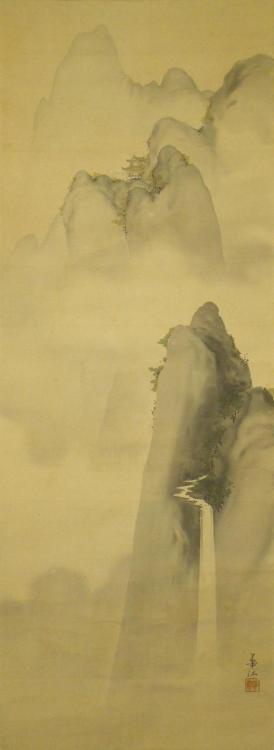SIT-A-LONG with JUNDO: Xin Xin Ming - (XII) - Clouds Water
 This week's passage of the Xin Xin Ming instructs us how to live in this trying and hectic life, yet with a mind open, clear and free ... living amid and as this world of the senses, thoughts, goals, emotions -- yet light, unfettered, unbound ... seeing distinctions and complexity as Wholeness and Simplicity ... at once, as one ...
This week's passage of the Xin Xin Ming instructs us how to live in this trying and hectic life, yet with a mind open, clear and free ... living amid and as this world of the senses, thoughts, goals, emotions -- yet light, unfettered, unbound ... seeing distinctions and complexity as Wholeness and Simplicity ... at once, as one ...
If you wish to move in the One Way
do not dislike even the world of senses and ideas.
Indeed, to accept them fully
is identical with true Enlightenment.
The wise man strives to no goals
but the foolish man fetters himself.
This is one Dharma, not many: distinctions arise
from the clinging needs of the ignorant.
To seek Mind with the discriminating mind
is the greatest of all mistakes.
I am reminded of this description (by Zen Teacher Kyogen Carlson) of the lessons of clouds and water. I happened to read it this week. Kyogen talks of a Chinese poem which contains the line: "To drift like clouds and flow like water."
... ... Neither clouds nor water insist upon
any particular form, for they take shape according to conditions. Clouds
attach to nothing, and so drift freely across the sky. Water twists and
turns on its way down hill in complete accord with the path it must
follow. The flowing of the water has the strength to move mountains,
while the drifting of the clouds is utterly free. In these qualities we
have a perfect description of the Zen mind. Just as clouds cling to
nothing, floating free and changing with the wind, acceptance of change
is the essence of nonattachment and expresses the perfect freedom of
meditation. Flowing water follows its course naturally, without
resistance or hesitation. This lack of resistance describes the
willingness at the heart of a true commitment to Zen practice, which
like water, has the strength to move mountains.
http://www.universalquest.com/driftingcloud.htm
A very good way to move through and whole with the complexities of life.
Today’s Sit-A-Long video follows at this link. Remember: recording ends soon after the beginning bells; a sitting time of 15 to 35 minutes is recommended
.
 This week's passage of the Xin Xin Ming instructs us how to live in this trying and hectic life, yet with a mind open, clear and free ... living amid and as this world of the senses, thoughts, goals, emotions -- yet light, unfettered, unbound ... seeing distinctions and complexity as Wholeness and Simplicity ... at once, as one ...
This week's passage of the Xin Xin Ming instructs us how to live in this trying and hectic life, yet with a mind open, clear and free ... living amid and as this world of the senses, thoughts, goals, emotions -- yet light, unfettered, unbound ... seeing distinctions and complexity as Wholeness and Simplicity ... at once, as one ...If you wish to move in the One Way
do not dislike even the world of senses and ideas.
Indeed, to accept them fully
is identical with true Enlightenment.
The wise man strives to no goals
but the foolish man fetters himself.
This is one Dharma, not many: distinctions arise
from the clinging needs of the ignorant.
To seek Mind with the discriminating mind
is the greatest of all mistakes.
I am reminded of this description (by Zen Teacher Kyogen Carlson) of the lessons of clouds and water. I happened to read it this week. Kyogen talks of a Chinese poem which contains the line: "To drift like clouds and flow like water."
... ... Neither clouds nor water insist upon
any particular form, for they take shape according to conditions. Clouds
attach to nothing, and so drift freely across the sky. Water twists and
turns on its way down hill in complete accord with the path it must
follow. The flowing of the water has the strength to move mountains,
while the drifting of the clouds is utterly free. In these qualities we
have a perfect description of the Zen mind. Just as clouds cling to
nothing, floating free and changing with the wind, acceptance of change
is the essence of nonattachment and expresses the perfect freedom of
meditation. Flowing water follows its course naturally, without
resistance or hesitation. This lack of resistance describes the
willingness at the heart of a true commitment to Zen practice, which
like water, has the strength to move mountains.
http://www.universalquest.com/driftingcloud.htm
A very good way to move through and whole with the complexities of life.
Today’s Sit-A-Long video follows at this link. Remember: recording ends soon after the beginning bells; a sitting time of 15 to 35 minutes is recommended
.



Comment